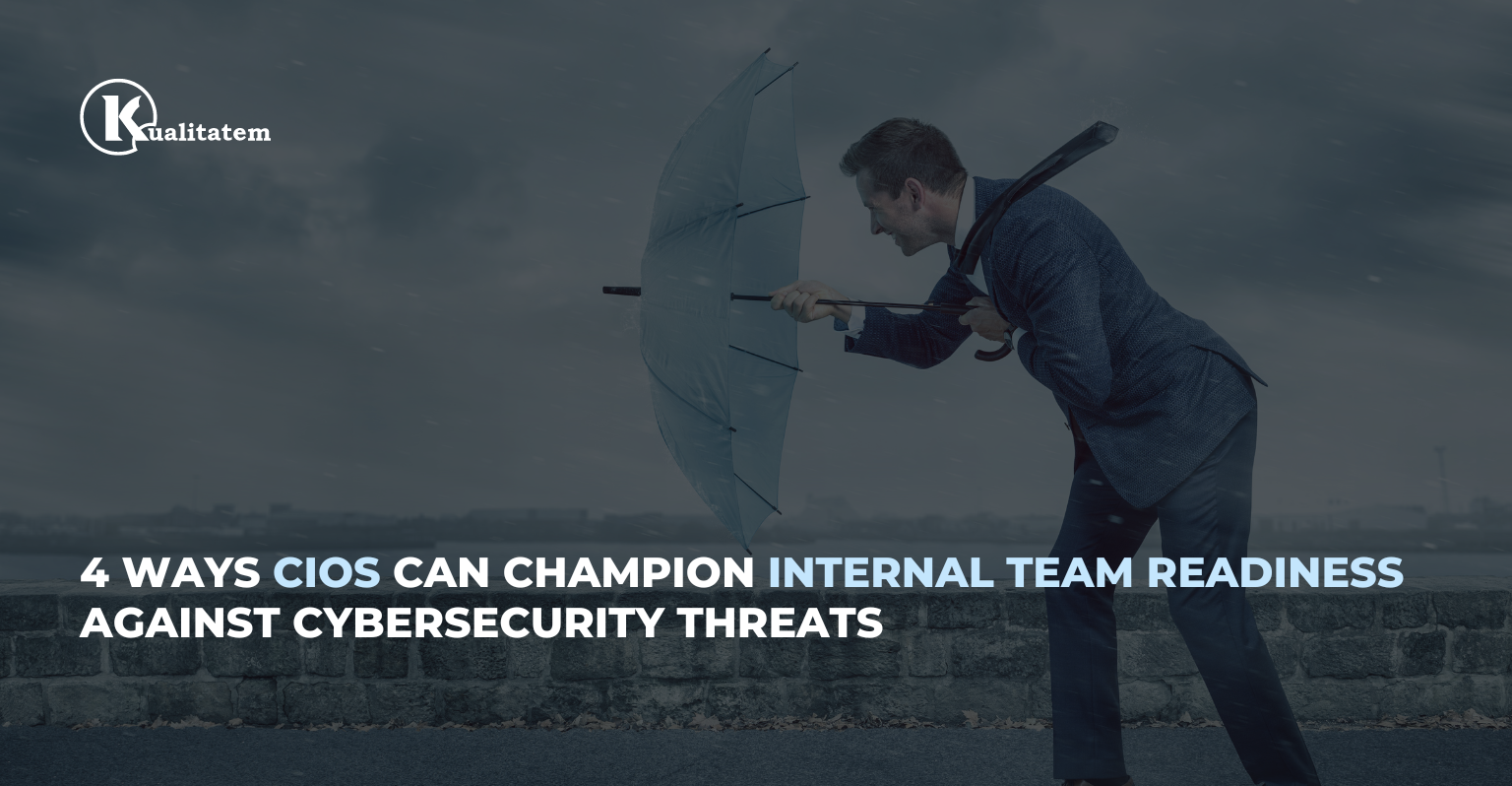4 Ways CIOs Can Champion Internal Team Readiness Against Cybersecurity Threats

- April 18, 2024
- admin
According to Forbes, the CIO role is more important than ever before – and with good reason. As custodians of their organizations’ internal information systems, CIOs play a vital role in ensuring IT governance, overseeing IT staff and leading the way forward for all internal-facing technology decisions. As many as 84% of CIOs list security management as a top concern. With cyber threats growing increasingly sophisticated, it’s imperative for CIOs to ensure that their internal teams can effectively combat these threats. Here are four key ways CIOs can upskill their internal teams to brace for cybersecurity threats.
1. Emphasize Continuous Learning and Updates
The cybersecurity landscape is an ever-evolving one, and skillsets must evolve with it. A lack of continuous learning leads to the development of a cybersecurity skills gap that can be easily exploited by a malicious actor. Cybersecurity is not a one-time effort; it requires an ongoing commitment that CIOs are in a prime position to champion top-down. Continuous learning initiatives providing employees with access to training programs, workshops, and resources to enhance their skills and knowledge can go a long way towards mitigating this gap.
2. Stay Vigilant in the Face of an Evolving Threat Landscape
Malicious actors continuously adapt their tactics to exploit vulnerabilities in emerging technologies. As new technologies are introduced, new attack vectors emerge. CIOs must ensure their teams operate under a high suspicion of index and remain vigilant at all times. This helps them be proactive in identifying and mitigating emerging threats. When it comes to cybersecurity, nothing can be taken for granted.
3. Enhance Cybersecurity Analysis and Investigation Capabilities
In today’s interconnected world, every Internet-enabled device is a potential doorway into your internal systems. Cybersecurity analysts can analyze network traffic, monitor for suspicious activity, and conduct investigations into security incidents. However, many organizations struggle with a shortage of skilled cybersecurity professionals. CIOs must invest in enhancing their team’s cybersecurity analysis and investigation capabilities. One way to rapidly bridge the resource gap is through team augmentation, by onboarding a trusted third-party with a proven track record of delivering continuous information security services.
4. Foster a Culture of Security Awareness and Training
The weakest link in the cybersecurity chain is not technology. It’s the human element. Human error remains one of the leading causes of cybersecurity incidents. CIOs can empower employees across all departments to make better, safer cybersecurity choices by prioritizing security awareness training initiatives and equipping them with the confidence to recognize and respond to potential threats appropriately.
While the scale & impact of cybersecurity incidents has escalated in recent years, the response to cybersecurity threats also puts CIOs in the spotlight. As leaders on the forefront of this battle, CIOs can play a decisive role in steering the course of their organizations’ cybersecurity strategy.











